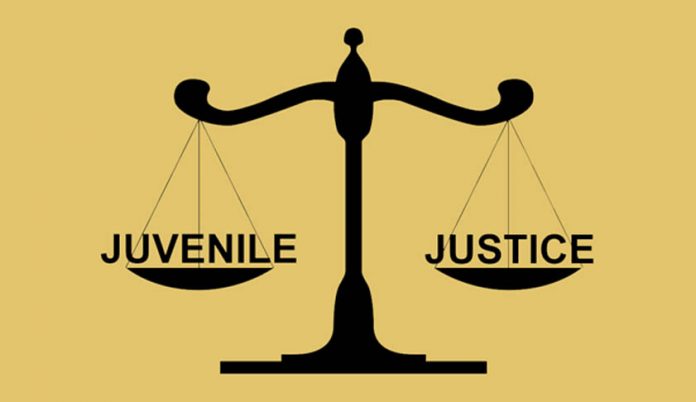This article is written by Paridhi Dave, a student at the Institute of Law, Nirma University. This is an exhaustive article which deals with the intricacies of the Juvenile Justice Board.
Table of Contents
Introduction
The Juvenile Justice (Care and Protection of Children) Act, 2015 (Hereinafter JJ Act, 2015) is a new legislation which repeals the Juvenile Justice Act, 2000. One of the primary reasons for the introduction of this act was to address the commission of heinous offences by juveniles aged 16-18. This development comes after the infamous Mukesh & Anr. vs. State of NCT of Delhi and Ors. (Nirbhaya case). Traditional criminal law labelled offenders as ‘delinquent or neglected children’ and proceeded to punish them as criminals but the new law aims at reformative justice for the convicts.
The primary focus of this Act is on the procedural aspect, with regard to pendency in cases, accountability of the functionaries, etc. It has also highlighted the categories of ‘child in conflict with law’ under Section 2(13) and ‘child in need of care and protection under Section 2(14) of the Act.
The Indian Constitution envisages a welfare state, where the children would be free from abuse and exploitation. The Act derives its constitutional legitimacy from Article 15(3), Article 39(e) and 39(f), Article 45 and Article 47 of the Constitution of India, 1950. These provisions empower the State to ensure the protection of basic human rights and needs of all children. Further, the Act also aims to achieve the objectives laid down in the United Nations Convention on the Rights of the Child, 1989, which was ratified by India in 1992. The National Policy for Children, 2013 and the National Charter for Children, 2003 take this view of child welfare as well.
In this Article, the intricacies of the Juvenile Justice Board under the Act, 2015 has been discussed.
To know more about introduction and overview of the Juvenile Justice Care and Protection Act, 2015, please watch the video below:
Juvenile Justice Board
The Juvenile Justice Board is an institutional body constituted under Section 4 of the JJ Act, 2015. According to the division of powers, the subject of administration of criminal justice has been included in the State List (List II, Schedule VII) of the Indian Constitution. Therefore, one or more than one Juvenile Justice Board(s) are established by the State Government for each district. The Board exercises its powers and discharges functions relating to the ‘child in conflict with law’ as has been defined under Section 2(13) of this Act.
Section 4 begins with the ‘saving clause’ which means that an overriding effect over the Code of Criminal Procedure,1973 has been given to this provision. It means that in spite of the provisions mentioned in the Code, the particular clause (S.4 here) would have a full operation. Therefore, S.4 is an enabling provision. The ‘notwithstanding clause’ has been discussed in the case of Chandavarkar Sita Ratna Rao vs. Ashalata S. Guram (AIR 1987 SC 117).
Under Section 7 of the Act, the procedure in relation to the Board has been laid down. The Board shall meet and carry out transactions of business as may be prescribed. It is the duty of the Board to ensure that all procedures are child friendly and the venue is not intimidating. If a difference of opinion arises among the Board members in the interim or final disposal stage, then there are two options:
Either the majority opinion will prevail or if there is no majority, then the opinion of the Principal Magistrate will prevail.
In those circumstances when the Board is not sitting, a child in conflict with law may be produced before an individual member. Further, the Board can pass orders even if any Board member is absent and such orders cannot be held invalid by the only reason that any member was absent during any stage of proceedings.

Constitution
The constitution of the Board has been defined in Section 4(2) of the Act.
Composition of Bench under Juvenile Justice Act, 2015
1. Metropolitan Magistrate or Judicial Magistrate First Class (Principal Magistrate herein) [not being Chief Metropolitan Magistrate or Chief Judicial Magistrate]
-Experience Required: 3 years.
2. Two social workers (one being a woman)
-Experience Required: Active involvement for 7 years in health, education or welfare activities pertaining to children; OR
-A practising professional with a degree in child psychology, psychiatry, sociology or law.
It was held by the Himachal Pradesh High Court in the case of State of Himachal Pradesh vs. Happy (2019 SCC OnLine HP 700) that judgment passed by a single member of the Juvenile Justice Board is void ab initio. In this case, the impugned order was passed by a single Magistrate, without fulfilling the criteria of the composition required for the functioning of the Juvenile Justice Board. Therefore, the order was set aside.
Powers granted to Juvenile Justice Board
The Bench shall have all the powers conferred by the Code of Criminal Procedure, 1973 on a Metropolitan Magistrate or a Judicial Magistrate First Class.
Eligibility Criteria for Selection as Member of Juvenile Justice Board
Under Section 4(4) of the Act, the eligibility criteria for selection as a Board member has been listed down. It has been defined in a negative manner.
The person will not be eligible if they:
- Have any past record of violation of human rights or child rights;
- Were convicted of an offence which involved the ground of moral turpitude + such conviction has not been reversed or has not been granted pardon;
- Were removed or dismissed from the services of:
- Either the Central Government or the State Government
- An undertaking/ corporation owned or controlled by the Central Government or the State Government
- Have ever indulged in the acts of:
- Child abuse
- Child labour
- Any other violation of human rights or immoral act
Training for Members of the Juvenile Justice Board
Under Section 4(5), the onus of sensitizing and providing training to all the Board Members lies on the State Government. It is to be ensured that the induction training is provided within a duration of 60 days from the date of appointment.
Term of Office for Members of the Juvenile Justice Board
Under Section 4(6) of the Act, the tenure of office for the Board members and the manner in which they may resign has been discussed.
Termination/Disqualification of Members of the Juvenile Justice Board
Under Section 4(7) of the JJ Act, 2015 – the appointment of any Board member, except the Principal Magistrate, may be terminated post an inquiry by the State Government if they:
- were found guilty of misuse of power bestowed upon them under this Act; or
- failed to attend the Board proceedings consecutively for three months without valid reasons; or
- failed in attending less than three-fourths of the sittings in a year; or
- Have become ineligible under sub-section 4 during their tenure as a member.
Placement of Persons
The Placement of Persons under the JJ Act, 2015 has been divided into two categories in accordance with Section 5 and 6.
|
Category 1 |
Category 2 |
|
A person who ceases to be a child during an inquiry |
A person who was below the age of 18 years when the offence was committed |
|
If an inquiry has been initiated in respect of any child under the Act and during such course of the inquiry, if the child completes the age of 18 years, then the inquiry can be continued and orders can be passed as if such person was a child. |
Any person who has completed 18 years of age, and is arrested for the commission of an offence when he/she was below 18 years, then such person shall be treated like a child during the process of inquiry. |
|
If the person is not released on bail by the Board, then they will have to be placed in a place of safety during the inquiry process. They shall be treated according to the procedure prescribed in this Act.
|
Procedure followed by the Magistrate who is not empowered by the Act
The procedure to be followed in these cases has been listed down in Section 9 of the Act:
1. If any Magistrate who does not have the power to exercise the powers of the Board under this Act, believes that the alleged offender brought before him is a child, then he shall, without any delay:
- Record such opinion; and
- Send the child immediately to a Board having jurisdiction, along with the record of such proceedings.
2. If any alleged offender claims before a Court other than the Juvenile Justice Board, that when the offence was committed:
- He/she is a child;
- He/she was a child.
OR
If the Court is itself of the opinion that the person was a child when the offence was committed, then the Court shall take the following steps:
- Make an inquiry;
- Take evidence which is essential for determining the age of the person, but this does not include affidavits.
- Record a finding on the matter, which states the age of the alleged offender.
PROVIDED THAT,
Such a claim can be raised before any court and can be recognized at any stage – this includes the stage of final disposal of the case and even after the final disposal.
The claim will be determined according to the provisions of this Act and the rules made thereunder, even if the person has ceased to be a child – on or before the date of commencement of the Act.
3. If the Court concludes that the person who has committed an offence was a child when the offence was committed, then it shall send the person to the Board for passing appropriate orders and sentence in the case. Further, if any orders or sentences have been passed by the Court, the same will be deemed to have no effect on the person.
4. If it is required under this section, that a person should be kept in protective custody, during the process of inquiry regarding the person’s claim of being a child, then the person should be placed in a place of safety.
Powers
The Board constituted for any district shall have the power to deal exclusively with the proceedings under the Act:
- In the area of jurisdiction of the Board,
- In matters relating to children in conflict with the law.
These powers may be exercised by the High Court or the Children’s Court, when proceedings under Section 19 come before them or in appeal, revision or otherwise. It was held in the case of Hasham Abbas Sayyad vs. Usman Abbas Sayyad (2007) 2 SCC 355 that an order passed by a magistrate beyond his jurisdiction would be considered void ab initio.
When an alleged child in conflict with law is produced before the Board, it shall exercise its power to hold an inquiry according to the provisions of this Act and may pass orders as it deems fit under Section 17 and 18 of the JJ Act, 2015.
The Board is also empowered to inquire into heinous offences under Section 15 of the Act. Such preliminary assessment has to be disposed of within a period of 3 months from the date of first production of the child before the Board.
In the case of Puneet S. vs. State of Karnataka (2019 SCC OnLine Kar 1835), the Karnataka High Court held that only the Juvenile Justice Board has the power to decide whether an offence committed by a juvenile is heinous or not.
Functions
|
Sr. No. |
Functions |
|
01 |
Ensuring informed participation of the child & the parent or the guardian throughout the process |
|
02 |
Ensuring protection of the child’s rights throughout the process of arresting the child, inquiry, aftercare and rehabilitation |
|
03 |
Ensuring the availability of legal aid for the child through various legal services institutions |
|
04 |
Providing a qualified interpreter or translator to the child if he/she fails to understand the language during the course of proceedings |
|
05 |
Directing Probation Officer/Child Welfare Officer/Social Worker to undertake a social investigation into the case. Further, directing them to submit the report within 15 days from the date of the first production before the Board. |
|
06 |
Adjudicating and disposing of cases pertaining to children in conflict with the law according to the process mentioned in Section 14 |
|
07 |
Transferring matters to the Committee in cases where the child is alleged to be in conflict with the law, but is stated to be in need of care and protection at any stage |
|
08 |
Disposing of the matter and passing a final order which should include an individual care plan for the child’s rehabilitation. This also includes follow-ups by officers or an NGO. |
|
09 |
Conducting inquiry for declaring that a certain person is fit for taking care of the child in conflict with the law |
|
10 |
Conducting inspection every month of residential facilities for children in conflict with the law and recommending various measures for improvement in the quality of services provided |
|
11 |
Ordering the police for registration of FIR if any offence is committed against any child in conflict with the law |
|
12 |
Conducting a regular inspection of jails meant for adults, to check if any child is lodged in such jails |
|
13 |
Taking immediate measures for the transfer of a child found in jails for adults, to an observation home |
|
14 |
Any other function as may be prescribed to the Board |
Any child who is in conflict with law cannot be kept in police lock-up or jail under any circumstances. The Supreme Court said that Juvenile Justice Boards should not be ‘silent spectators’, in the case Re: Exploitation of Children in Orphanages in the State of Tamil Nadu vs. Union of India and Ors.
Conclusion
In traditional law, the offenders were dealt with in a strict and harsh manner. The practice of jailing the juveniles with hardened criminals led to further trouble and disintegration of society.
There are several factors behind the involvement of children in criminal activities, such as poverty, unemployment, broken families, lack of parental control, etc. The new legislation provides a response to these factors through the procedure of reformative justice.
It acknowledges the fact that children require special care and protection instead of treating them in the same manner which led to their engagement in criminal activities.
The Juvenile Justice Board aims to deal with such children in conflict with the law in the best possible manner so that they can be integrated into society as a contributing member at a later stage.
References
- https://shodhganga.inflibnet.ac.in/bitstream/10603/21219/1/10%20chapter-3.pdf
LawSikho has created a telegram group for exchanging legal knowledge, referrals and various opportunities. You can click on this link and join:
 Serato DJ Crack 2025Serato DJ PRO Crack
Serato DJ Crack 2025Serato DJ PRO Crack










 Allow notifications
Allow notifications



